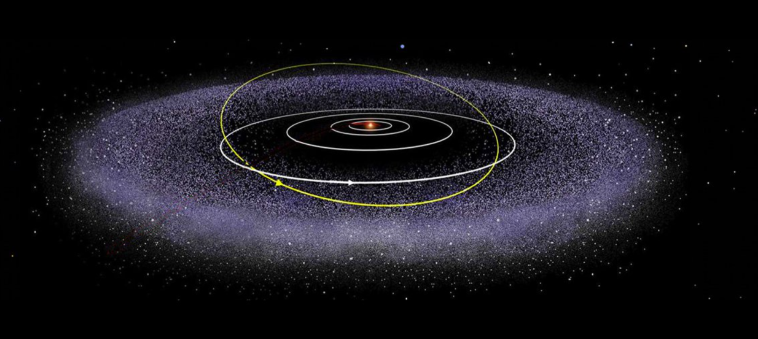Comet formation mystery

Comets in the Oort cloud could not have formed in their current places, because the material at such huge distances is so thinned that nothing could really coalesce into objects of several kilometers there.
Comets could not have formed in interstellar space either, because capturing comets in the solar system is a very inefficient process.
So how did the Oort cloud form?
The only place left is the planetary part of the solar system. Oort proposed that all comets may have formed in the asteroid belt and were later ejected over the large planets during the formation of the solar system. The problem is that comets are ice-filled bodies, and the asteroid belt is too warm for ice.
During the period when astronomers came up with the idea of the Oort cloud, several astronomers came up with the idea of an asteroid belt beyond Neptune’s orbit. And they were right!
In fact, such a belt was discovered in 1992 and today it contains the largest asteroids in the Solar System. In 1943, Kenneth Edgeworth came up with the idea that Jupiter-type comets originate behind Neptune, which is now generally accepted.
Gerard Kuiper postulated that small objects the size of comets could have formed around Neptune during the formation of the Solar System and were later pushed to the Oort cloud. Kuiper also realized that comets in the Oort cloud could be returned to the planetary region by perturbations produced by stars passing close to the Sun.
Perturbations and influence
Comets probably originate in the regions of the large planets, but astronomers have long assumed that perturbations under the influence of Neptune and, to a lesser extent, Uranus, were the main process that ejected comets into the cloud.
During a close encounter of a body with Neptune, it is much more likely that it will enter the Oort cloud than that it will be ejected from the solar system.

On the other hand, the perturbations under the influence of Jupiter are much stronger, so the comets should just fly through the Ort cloud on a hyperbolic path after the encounter. However, a small body near large planets usually ends up being ejected under the influence of Jupiter.
More precisely, over 60% of objects are under the influence of Jupiter.
However, there is a different probability, from planet to planet, that the body will be ejected to the Oort cloud. If we take into account the outer part of the cloud from which long-period comets originate (a>15000 AU), Neptune, however, moves the largest number of comets.
Although as much as 60% of bodies are found under the influence of Jupiter, it is very unlikely that these objects will actually be found in the Ort cloud – less than 2% probability. However, the situation changes if we look at the inner parts of the Oort cloud.
For example, at a distance of ~ 4000 AU Saturn, and to a lesser extent Jupiter move a significant number of comets (about 30%).
The filling of the Oort cloud is a complex one among the large planets, in which all of them play a significant role in the process.

